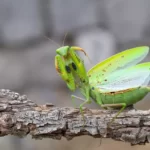Cucumbers are a favorite in many gardens, known for their refreshing taste and versatility in culinary uses. Transplanting cucumber seedlings at the right time and under optimal conditions is crucial for their growth and productivity. This guide will walk you through the process of successfully transplanting cucumber seedlings, ensuring they thrive in your garden.
Cucumber Seedlings’ Growth
Cucumber seedlings go through several developmental stages before they are ready for transplanting. Initially, seeds germinate and sprout, forming small seedlings. As these seedlings grow, they develop true leaves, which are different from the initial sprout leaves (cotyledons). When seedlings have two to three true leaves, they are typically strong enough to withstand transplanting. Observing these signs of maturity is key to determining the right time for moving them to your garden.
Ideal Conditions for Cucumber Growth
Cucumbers thrive in warm conditions and require well-draining soil rich in organic matter. They prefer a soil pH between 6.0 and 7.0 and need full sunlight for optimal growth. Choosing a location in your garden that receives at least 6-8 hours of sunlight daily is ideal. Additionally, cucumbers need protection from strong winds, as their vines can be delicate.
Preparing for Transplantation
Before transplanting cucumber seedlings, it’s essential to prepare both the plants and the garden bed:
- Soil Preparation: Enhance your garden soil by adding compost or a balanced fertilizer to provide the necessary nutrients for growth.
- Hardening Off Seedlings: Gradually acclimate your indoor-grown cucumber seedlings to outdoor conditions. This process, known as hardening off, involves exposing seedlings to the outside environment for increasing periods over a week or two.
The Best Time to Transplant Cucumber Seedlings
Timing is a critical aspect of transplanting cucumbers. The best time to transplant is after the danger of frost has passed and when soil temperatures have warmed adequately. In most regions, this typically means waiting until late spring or early summer.
Knowing your area’s last frost date is essential. Transplanting cucumbers too early can expose them to cold temperatures, which can stunt their growth or even kill the young plants.
Transplanting Cucumber Seedlings: Step-by-Step Guide
Once you’ve determined that conditions are right for transplanting, follow these steps to ensure a successful move for your cucumber seedlings:
- Water Seedlings: Water your cucumber seedlings well a few hours before transplanting to ensure they are hydrated.
- Prepare the Transplant Hole: Dig a hole in your prepared garden bed that is slightly larger than the root ball of the seedling. The spacing between holes should be about 18 to 36 inches, depending on the cucumber variety.
- Careful Removal: Gently remove the seedling from its current container, being careful not to damage the roots. If you’re using biodegradable pots, you can plant them directly into the soil.
- Positioning the Seedling: Place the seedling in the hole at the same depth it was growing in the container. Backfill the hole with soil and gently firm it around the base of the plant.
- Watering After Transplanting: Water the seedlings immediately after transplanting to settle the soil and eliminate air pockets.
Post-Transplant Care for Cucumber Seedlings
After transplanting, the seedlings will need proper care to establish and grow:
- Consistent Watering: Keep the soil consistently moist but not waterlogged. Cucumbers require a lot of water, especially as they grow and produce fruit.
- Mulching: Apply a layer of organic mulch around the plants to retain moisture, regulate soil temperature, and suppress weeds.
- Support Structures: If you’re growing vining varieties, provide support like a trellis or stakes for the vines to climb on. This helps in saving space and keeping the fruits off the ground.
- Monitoring: Keep an eye on the plants for signs of pests or diseases. Early detection and treatment can prevent more significant problems.
Common Challenges in Transplanting Cucumbers
Transplanting cucumbers can sometimes be tricky, with several common challenges:
- Transplant Shock: Symptoms include wilting, yellowing, or leaf drop. To reduce shock, ensure gradual acclimatization during hardening off and provide adequate water after transplanting.
- Pests and Diseases: Common issues like cucumber beetles or powdery mildew can affect young plants. Use appropriate organic or chemical controls as necessary.
- Environmental Stress: Extreme temperatures, either too hot or too cold, can stress cucumber plants. Providing shade during the hottest part of the day or covering plants during unexpected cold snaps can help.
Conclusion
Successfully transplanting cucumber seedlings is a critical step towards a fruitful harvest. The key lies in understanding the right timing, preparing adequately, and providing careful post-transplant care. By following these guidelines, gardeners can ensure their cucumber plants thrive and produce an abundant crop.
To recap, remember the importance of:
- Timing the Transplant: Wait until after the last frost date and when soil temperatures are warm enough to support cucumber growth.
- Preparing the Seedlings and Soil: Gradually acclimate seedlings to outdoor conditions and ensure the garden bed is well-prepared with nutrient-rich soil.
- Careful Transplanting: Handle seedlings gently, maintain proper spacing, and water immediately after transplanting.
- Ongoing Maintenance: Regular watering, mulching, providing support structures, and monitoring for pests and diseases are vital for healthy growth and development.
Transplanting cucumbers can be a rewarding experience, offering the delights of home-grown, fresh cucumbers for salads, pickling, or simply enjoying raw. Each step in the process, from seedling care to transplanting and beyond, is an opportunity to learn and connect with your garden. With patience, attention, and care, your cucumber plants can become a vibrant and productive part of your garden landscape. Happy gardening!



